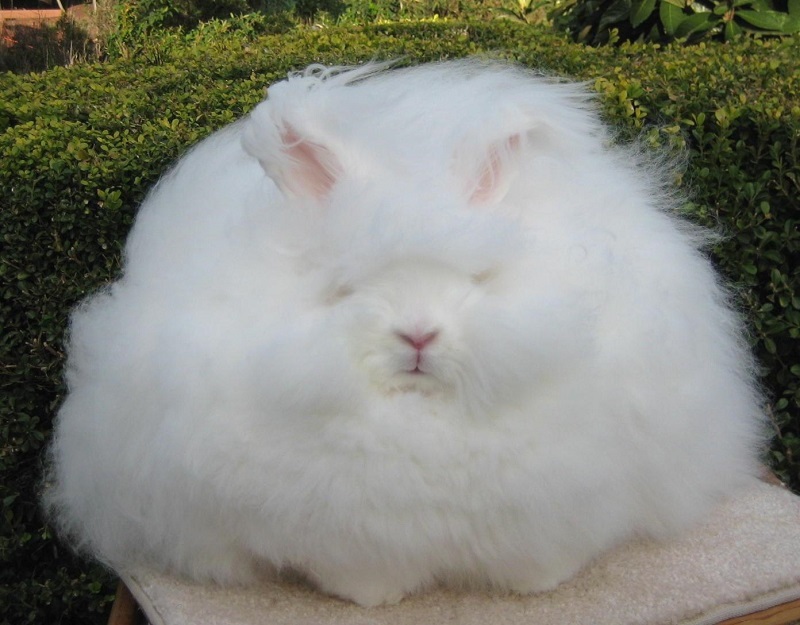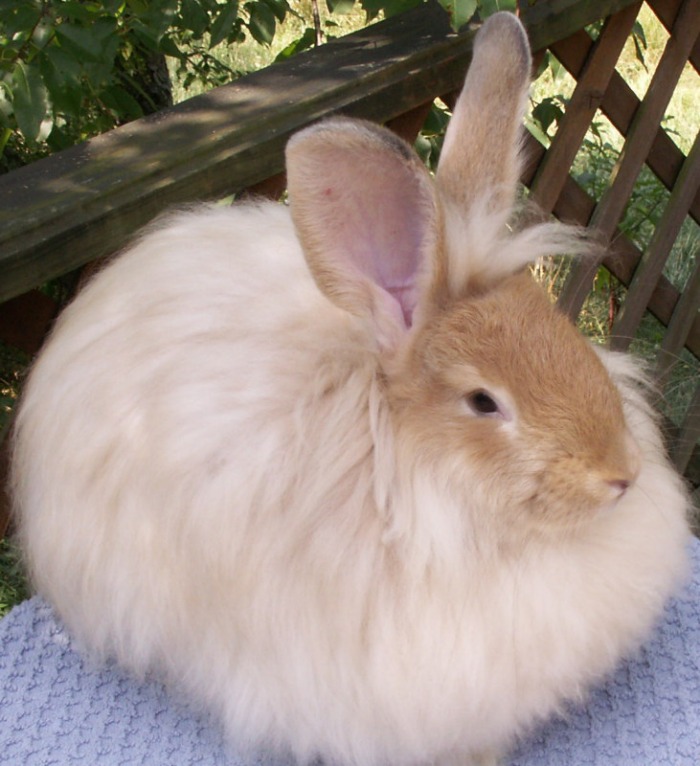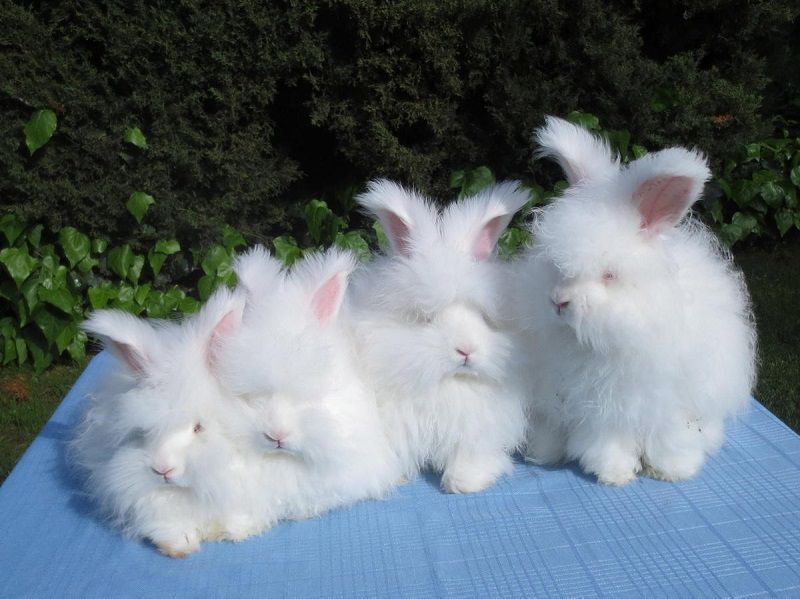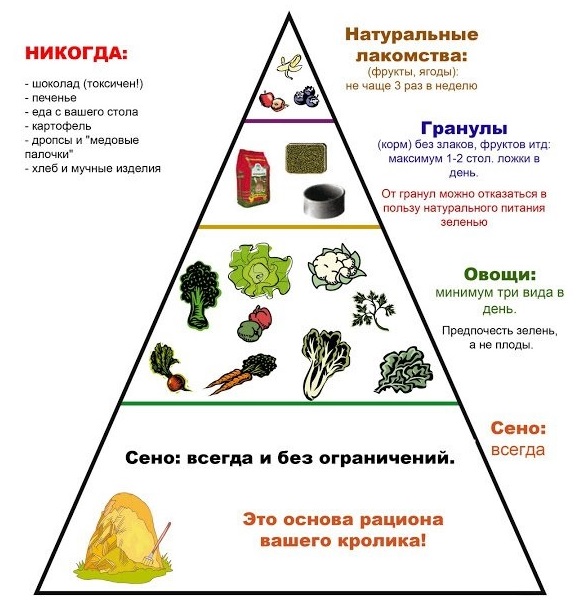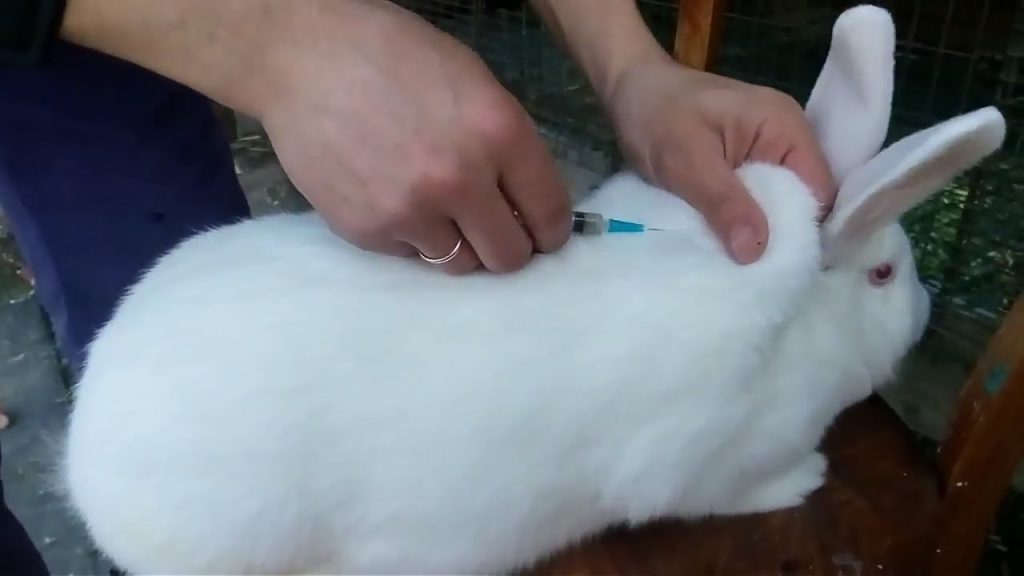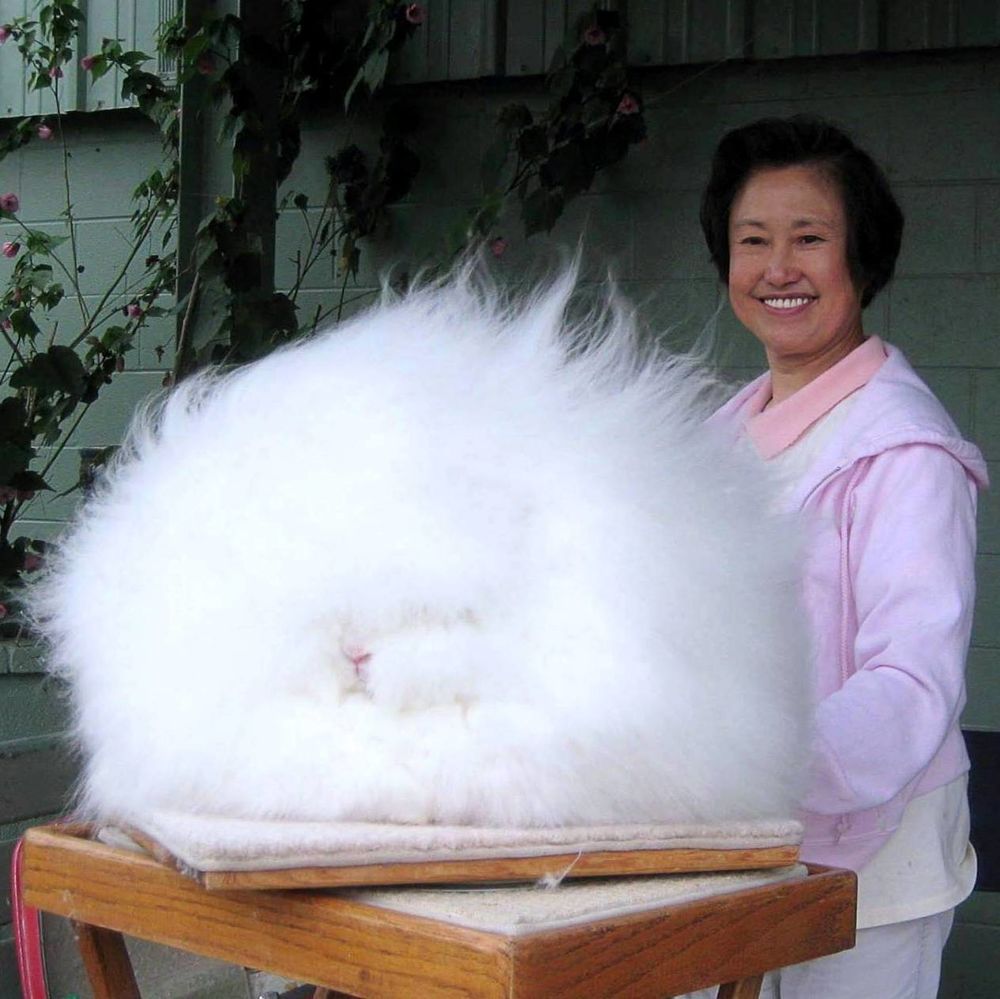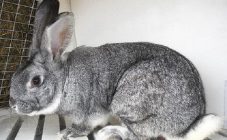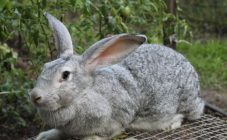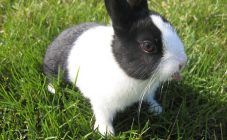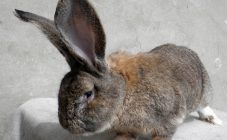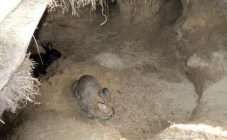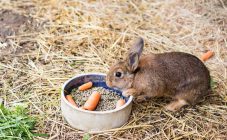Content:
A long time ago, before our era, man tasted hare. True, the ancient people did not set themselves the goal of domesticating the long-eared. It has already occurred to a modern person to get the opportunity to have the required number of these animals always at hand.
History of the breed
In the southern hemisphere and on adjacent islands, the dominance of the hare family has become a disaster. Now their breeding there is prohibited by law. After all, the European rabbit (rabbit) - the main progenitor of modern hybrids - is very fertile, capable of destroying huge areas of cultivated crops. Vast communities and clans of rodents can diverge many hundreds of kilometers underground.
The Angora rabbit was first introduced to the territory of Russia in the 9th century. The variety is especially widespread due to rabbit fluff. Apparently, there was less need for hare in those days. Russian forests have never experienced a shortage of edible animals.
Downy breed of rabbits
Downy bunnies come in several different varieties. They are also called angora (angora) in honor of the capital of Turkey - Ankara, because for the first time they began to be bred there. The gray, black, blue and white fuzzies have since conquered the entire planet. Although purebred Angora are snow-white, without any admixture.
Characteristically, all varieties of downy breeds have a compact cylindrical body, a wide, flat muzzle.
The most famous Angora breeds:
- English. Adults weigh 3 kg on average. There is no down only on the nose and tips of the paws. English rabbits are brushed every 3 days.
- Atlas (Satin). Weighs 3 - 5 kg. The fur is very delicate. Fluff does not grow on the face and legs. Wool productivity is less than that of other downy species, but it is renowned for its quality and durability.
- Downy white. The snow-white cover consists almost entirely of down. The content of the guard hair is not more than 7%. The length of the down is about 6 cm. The weight of the rabbit is 4 kg.
- Giant. Some specimens gain weight up to 6 kg. They differ from other species with tassels on the ears. There is a large yield of down products from the breed.
- French - rabbits of average weight (3.5-4.5 kg). This is the most unpretentious type of wool care. She is not prone to stumbling.
- German Angora rabbit. Weight 3-3.5 kg. The only breed to be clipped with scissors. The frequency of haircuts is 2.5 months.
- Angora dwarf rabbit (or decorative Angora rabbit, dwarf). It weighs an average of 1.5-2 kg. The eyes are red or blue, the nails are transparent. There is a variety - angora lop-eared dwarf rabbit Ram (Teddy ram).
Description and characteristics of the breed
The purchase of a pet is a responsible business, especially if the animal is purchased for breed breeding. Before you buy, you should read special literature or study the forums. But there are general rules regarding the health of living creatures.
First of all, cubs under 3 months old cannot be considered for purchase. Usually, only by this time the lactation period ends, the breed and sex characteristics appear exactly, the physical and emotional connection with the parent ends.And most importantly, the bunny is already eating adult food.
Pet selection
What external signs should you pay attention to:
- condition and conformity to the breed of fur;
- cleanliness of eyes, nose;
- weight-for-age;
- bite;
- demeanor;
- anatomical state of the skeleton;
- the appearance and cleanliness of the anus.
Be sure to check the vaccination schedule, documents confirming the breed of parents, diet.
The little angora is very curious and active. Doesn't shy away from people. If the animal is apathetic, with watery eyes, with signs of indigestion, then it is not even recommended to take it in your hands. He may be sick, so there is a risk of transferring the infection to humans and other animals with whom he will have to live in the same barn.
Bearing in mind that this breed is distinguished by excessive fluffiness, it will not hurt to touch the potential pet for neoplasms, partial baldness, and felting of the coat. You can check the length of hair, bangs, ear tassels and sideburns.
Downy rabbit fertility
The Angora rabbit in the first year brings only 2 offspring. The total annual number of calves is 10-14. Each subsequent year the number of okrolov increases and reaches 5-6 times annually. As a result, each mature (3-4-year-old) uterus can bring more than 40 young rabbits per year.
In newborn babies, it is almost impossible to determine the gender. The first signs begin to appear only 3 weeks after the birth of the rabbit. Finally, the primary genital organs are formed by 3 months. In males, the testicles come out and can be felt.
Also, the male and female are different in appearance. Krol are usually smaller in size. Its structure is rougher, the head is more massive and wider. In females, the body lines are smoother, the croup is wider, and the head is more graceful. The rabbit also has noticeable nipples (located in 2 rows).
Color
Downy breeds can have a different color, but it must be of one color. The presence of hairs of other shades is not allowed (an impure color is a defect). Also, each color of the skin corresponds to a certain color of the eyes and claws. An animal with a uniform color of hair, eyes and claws is considered a breed. For example, in a snow-white angora, eyes can only be red or blue. The nails in both variants are colorless.
Features of the content of Angora
For the life of rabbits, houses are constructed - cages (aviaries). Depending on the breed, the dimensions will vary from 0.35 × 0.35 to 0.5 × 0.5 m². Since they are burrowing animals, part of the cell must be shaded. Hay or grass should be present at all times in a dedicated feeder. You also need 24/7 access to fresh water. It is better to purchase food dishes made of stone or ceramic.
Rabbits are easily litter box trained. Only it needs to be put in the same place and cleaned regularly. The animal will not go to the dirty toilet again.
The rabbit family should be trimmed / plucked once a month, and combed thoroughly at least once a week. The animal is not bathed unless absolutely necessary.
The diet
Recommended list of products for Angora:
- special feed for rabbits;
- cereals and legumes (except for beans);
- fresh grass (slightly dried) with the exception of poisonous plants (dope, celandine, milkweed) and feather grass;
- root vegetables, cabbage, except cabbage, fruits;
- dry grass in winter;
- herbal granules (shredded and dried grass) and bone meal;
- fresh water.
The required protein component of the feed is 17%.
Vaccinations and diseases (prevention and treatment)
In order to avoid diseases, the animals are recommended to be vaccinated starting from 1.5 months. Revaccination after 3 months. In subsequent years, repeat vaccinations twice a year. After vaccination, lethargy and loss of appetite are normal. After 1-2 everything goes away.
Vaccinations do not cure all diseases. Unfortunately, you have to deal with a lot of pet health troubles. If the fluffy suddenly became mocked, refuses food and water, hides from the light, or, God forbid, there is incomprehensible discharge from the eyes, nose, anus, then you should immediately contact your veterinarian.
Rabbit diseases can be classified into several groups:
- Non-infectious. They are most likely caused by a breach of containment (dust, high humidity, poor quality food / water, heat stroke, injury). With timely treatment, animals can be saved. Sometimes it is enough to change one of the influencing factors, and everything becomes normal.
- Infectious. The most dangerous group. The main ones are: staphylococcus (culling and destruction), dermatitis (treatment of ulcers with 3% hydrogen peroxide and baytril antibiotic, levomekol ointments and a rescuer), rhinitis (treatment with furacilin 1% mixed with penicillin (20,000 units per 1 mg), drip remedy twice a day).
- Invasive. This is a parasite infestation. These include: coccidiosis (for 10 days, solder with an aqueous solution of sulfanilamide drugs 2 times a day for 5 days), scabies (aerosol acrodex, aqueous solutions of hexaline, hexatalpa, hereolin), myxomatosis (cannot be treated), fascioliasis (no drugs will not help). If it is impossible to get rid of the disease, then the only way out is to slaughter the sick animal.
The nuances of breeding Angora rabbits
Sexual maturation of Angora fluffy rabbits occurs much later than in other species from the hare family. In the first mating, the rabbit is allowed only at the age of one. The rendezvous takes place on the territory of the male. One meeting is not enough for successful mating. Despite the aggressiveness of the female, the attempt should be repeated a few more times. How many babies there will also depend on the number of males. There will be more of them when the rabbit is covered with several males at different times. Complete rejection of the rabbit will mean the conception of a rabbit.
Babies will be born in a month. An interesting feature: in angora, first-borns bring about 5 cubs at a time, and okrol happens only twice a year. For the next year and beyond, the number of babies and children will increase.
Special conditions must be created for pregnant animals. No temperature drops, sharp sounds should not irritate them. It is better to exclude the proximity with the cells of other animals. It is also important that she has a secluded place to build a nest. There she will produce rabbits and will nurse them.
Without exception, all downy bunnies are given the opportunity to give birth twice. In the future, about 70% of the total livestock is kept only for fluff, and 30% - as a replacement herd.
Breed advantages and disadvantages
Description of the benefits of angora rabbits (per animal):
- down productivity - 0.5-1.5 kg per year;
- meat productivity up to 6 kg;
- multiplicity.
Disadvantages of the breed:
- medium ripening;
- special requirements for the content.
Angorka is one of the most common downy rabbit breeds on the planet. In terms of warmth, quality of yarn and beauty, soft products from rabbit down are superior to products from goat. Considering such qualities as fertility and good meat productivity, these eared ears are uncompetitively profitable. The cost of their maintenance is several times higher than the profit. And most importantly, breeding Angora rabbits is available even to a beginner.
